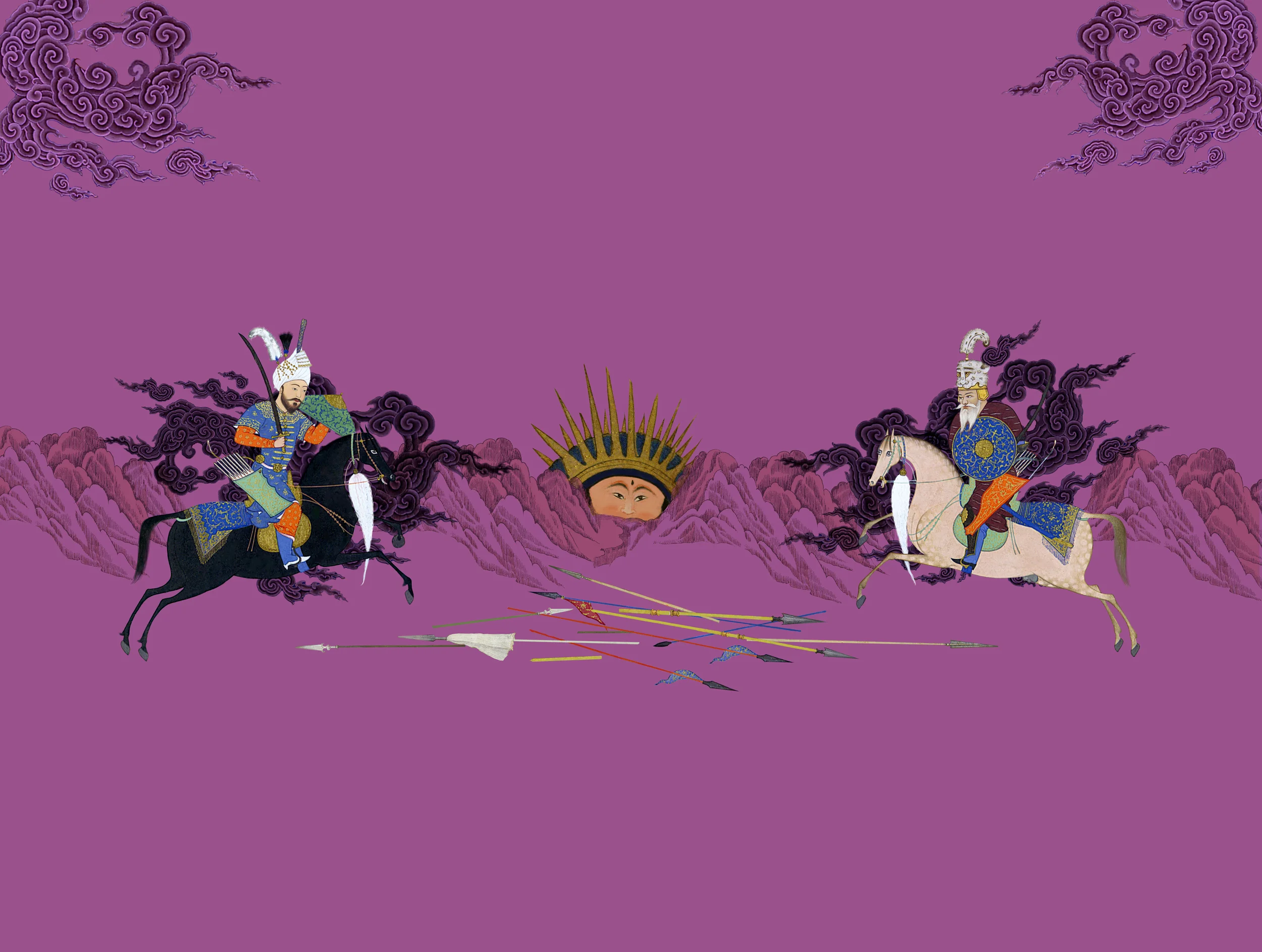About Shahnameh - The Book of Kings
A little over a thousand years ago a Persian poet named Ferdowsi of Tous collected and put into heroic verse the millennium old mythological and epic traditions of Iran. It took him thirty years to write the sixty thousand verses that comprise the Shahnameh (The Book of Kings). This monumental tome is one of the most important literary works of Iran and like other great epics, such as Gilgamesh, The Odyssey, Nibelungenlied and Ramayana, it is a record of the human imaginative consciousness. It is well known and has been adapted through out the Near East, Central Asia and India but is mostly unknown in the West.
The stories of the Shahnameh tell the long history of the Iranian people. It begins with the creation of the world and the origin myths of the arts of civilization (fire, cooking, metallurgy, social structures, etc.) and ends with the Arab conquest of Persia in the seventh century, A.C.E. A mix of myth and history, the characters of Shahnameh take the readers on heroic adventures filled with superhuman champions, magical creatures, heart-wrenching love stories, and centuries-long battles.
Ferdowsi was grieved by the fall of the Persian Empire. Shahnameh was meant to harbor the Persian collective memory, language, and culture amidst a turbulent sea of many historical storms and to preserve the nostalgia of Persia’s golden days.
Heroes of Shahnameh are often torn between incompatible loyalties: moral duty against group obligations, filial piety against national honor, etc. Some Iranian kings and heroes appear in Shahnameh as shining examples of courage and nobility. Others are portrayed as flawed human beings who lose their divine “charisma,” their loved ones, and even their own lives to pettiness and hubris. Ferdowsi stresses his belief that since the world is transient, and since everyone is merely a passerby, one is wise to avoid cruelty, lying, avarice and other evils; instead one should strive for order, justice, honor. truth and other virtues.
Shahnameh has survived as the embodiment of the pre-Islamic Persian soul, but it is much more than a national treasure. As a document of human collective consciousness, it reflects the dilemmas of the human condition as it confronts us with the timeless questions of our existence.
The present version covers the brief mythological opening of Shahnameh as well as the main bulk of its epic stories. The last one third of the book that is dedicated to the tales of the last pre-Islamic dynasty of Iran and the Arab conquest is not part of this version of Shahnameh.

